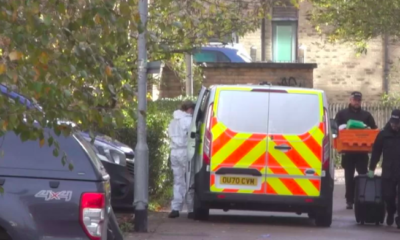
The rapid spread of a new variant of coronavirus has been blamed for the introduction of strict tier four mixing rules for millions of people, harsher restrictions on mixing at Christmas in England, Scotland and Wales, and other countries placing the UK on a travel ban.
So how has it gone from being non-existent to the most widely recognized type of the infection in pieces of England very quickly? The public authority’s guides on new contaminations have “moderate” certainty that it is more ready to send than different variations. All the work is at a beginning phase, contains colossal vulnerabilities and a considerable rundown of unanswered inquiries. As I’ve composed previously, infections transform constantly and it’s fundamental to keep a laser center around whether the infection’s conduct is evolving. Three things are meeting up that mean it is standing out: It is quickly supplanting different variants of the infection. It has changes that influence some portion of the infection prone to be significant. A portion of those changes have just been appeared in the lab to build the capacity of the infection to contaminate cell. These meet up to assemble a case for an infection that can spread all the more without any problem. Nonetheless, we don’t have supreme sureness. New strains can turn out to be more normal basically by being in the perfect spot at the perfect time -, for example, London, which had just level two limitations as of not long ago. Be that as it may, as of now the defense for level four limitations is to some extent to lessen the spread of the variation. “Lab tests are required, yet would you like to stand by weeks or months [to see the outcomes and make a move to restrict the spread]? Presumably not in these conditions,” Prof Nick Loman, from the Covid-19 Genomics UK Consortium, let me know. It was first recognized in September. In November around a fourth of cases in London were the new variation. This arrived at almost 66% of cases in mid-December. Mathematicians have been running the numbers on the spread of various variations trying to compute the amount of an edge this one may have. Yet, prodding separated what is because of individuals’ conduct and what is because of the infection is hard. The figure referenced by Prime Minister Boris Johnson was that the variation might be up to 70% more contagious. He said this might be expanding the R number – which shows if a pestilence is developing or contracting – by 0.4. That 70% number showed up in an introduction by Dr Erik Volz, from Imperial College London, on Friday. During the discussion he stated: “It is actually too soon to tell… however from what we see so far it is becoming rapidly, it is becoming quicker than [a past variant] ever developed, yet it is critical to watch out for this.” There is no “nailed on” figure for the amount more irresistible the variation might be. Researchers, whose work aren’t yet open, have disclosed to me figures both a lot higher and much lower than 70%. Yet, there remain inquiries regarding whether it is any more irresistible whatsoever. “The measure of proof in the public space is woefully insufficient to draw solid or firm feelings on whether the infection has really expanded transmission,” said Prof Jonathan Ball, a virologist at the University of Nottingham.
An underlying examination of the new variation has been distributed and recognizes 17 possibly significant changes. There have been changes to the spike protein – this is the key the infection uses to open the entryway to our body’s cells. One transformation called N501Y changes the main piece of the spike, known as the “receptor-restricting area”. This is the place where the spike connects with the outside of our body’s cells. Any progressions that make it simpler for the infection to get inside are probably going to give it an edge. “It looks and scents like a significant transformation,” said Prof Loman. The other change – a H69/V70 erasure, in which a little piece of the spike is eliminated – has arisen a few times previously, incorporating broadly in tainted mink. Work by Prof Ravi Gupta at the University of Cambridge has proposed this change expands infectivity two-overlap in lab tests. Studies by a similar gathering recommend the cancellation makes antibodies from the blood of survivors less successful at assaulting the infection. Prof Gupta let me know: “It is quickly expanding, that is the thing that’s stressed government, we are concerned, most researchers are stressed.” All three driving immunizations build up a resistant reaction against the current spike, which is the reason the inquiry comes up. Antibodies train the resistant framework to assault a few distinct pieces of the infection, so despite the fact that piece of the spike has transformed, the immunizations should in any case work. “However, in the event that we let it add more transformations, at that point you begin stressing,” said Prof Gupta. “This infection is conceivably on a pathway for immunization escape, it has made the main couple of strides towards that.” Vaccine escape happens when the infection changes so it evades the full impact of the antibody and keeps on tainting individuals. This might be the most concerning component of what’s going on with the infection. This variation is only the most recent to show the infection is proceeding to adjust as it contaminates increasingly more of us. An introduction by Prof David Robertson, from the University of Glasgow on Friday, closed: “The infection will presumably have the option to produce immunization get away from freaks.” That would set us in a place like influenza, where the antibodies should be consistently refreshed. Luckily the antibodies we have are anything but difficult to change.





































































































































































































































































































































































































































































































































































































































































































































RSS